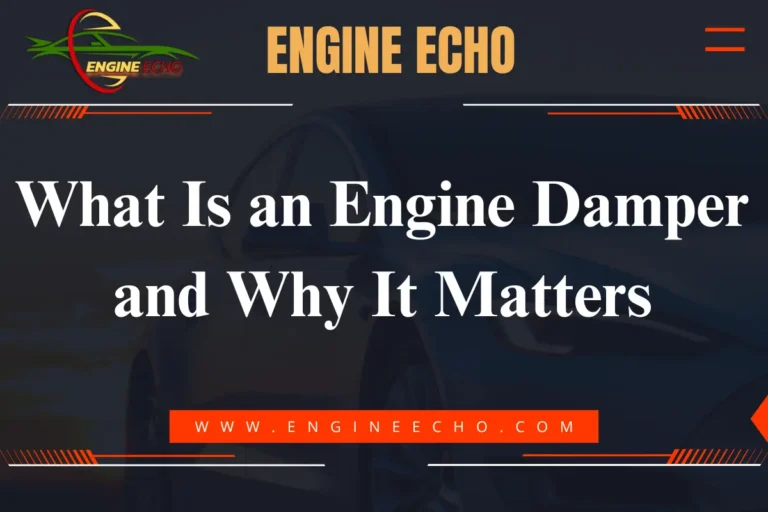Cars with VTEC Engine: Honda’s Engineering Marvel

Key Takeaways
- Pioneering Innovation: Honda’s VTEC (Variable Valve Timing and Lift Electronic Control) sets benchmarks in balancing performance and efficiency.
- Global Recognition: VTEC engines power iconic cars like the Honda Civic Si, Integra Type R, and S2000.
- Technical Excellence: It offers adaptive performance through variable valve timing, making engines more versatile.
- Cultural Impact: VTEC engines have inspired car culture globally, especially among enthusiasts.
- Future-Focused: Honda continues to refine VTEC with hybrid and eco-friendly integrations.
Introduction
If you’ve ever heard the exhilarating roar of a Honda engine at high RPMs, you’ve experienced the magic of VTEC technology. Honda’s Variable Valve Timing and Lift Electronic Control (VTEC) system, introduced in 1989, bridges the gap between fuel efficiency and raw performance. This innovation transformed the automotive industry, showcasing Honda’s dedication to driver-centric engineering.
In this article, we’ll explore the evolution of VTEC, its working principles, and its cultural and technological impact.
The Evolution of VTEC Engines
Early Development
- Introduced in 1989 with the Honda Integra XSi.
- Aimed to balance low-end efficiency with high-end performance for spirited driving.
Milestones
- 1990s: VTEC expanded into mainstream models like the Civic and Accord, with the Integra Type R becoming a performance icon.
- 2000s: Turbocharged VTEC engines and hybrid applications marked new versatility.
Honda’s consistent R&D pushed VTEC from a niche innovation to a global standard, influencing competitors to create similar technologies.
How VTEC Works
Basic Principles
VTEC dynamically adjusts valve timing and lift based on engine RPM:
- Low RPM: Focused on fuel economy and smooth operation.
- High RPM: Delivers a power surge for dynamic driving.
Key Components
- Camshaft Profiles: Two distinct profiles optimize engine performance.
- Hydraulic Actuators: Enable seamless transitions between profiles.
- ECU (Engine Control Unit): Controls timing and ensures smooth operation.
This ingenious system gives VTEC engines their signature versatility and efficiency.
Benefits of VTEC Technology
Enhanced Performance
- Combines power and fuel efficiency for all driving conditions.
- Excels in both urban commutes and high-speed performance scenarios.
Adaptability
- Prioritizes fuel savings at low speeds and unleashes power at high RPMs.
- Offers a unique driving experience, appreciated by enthusiasts and daily drivers alike.
Iconic Honda Models Featuring VTEC
Honda Civic Si
- Transforms the practical Civic into a sporty machine.
- Offers spirited handling and impressive acceleration.
Honda Integra Type R
- Lightweight and high-revving, designed for track performance.
- Known for its exceptional balance and driver engagement.
Honda S2000
- Celebrated for its 9,000 RPM redline.
- A roadster that showcases the raw potential of VTEC.
VTEC in Modern Vehicles
Current Applications
- Powers flagship models like the Honda Civic, Accord, and CR-V.
- Introduces features like direct injection for enhanced efficiency.
VTEC TURBO
- Combines turbocharging with VTEC for exceptional performance.
- Featured in the Civic Type R, which excels in power and handling.
Comparing VTEC to Other Technologies
| Technology | Features | Key Differentiator |
|---|---|---|
| VTEC | Variable valve timing with a performance “kick.” | Offers high RPM excitement. |
| Toyota VVT-i | Smooth transitions without dramatic shifts. | Prioritizes consistent efficiency. |
| i-VTEC | Advanced VTEC with improved adaptability. | Combines VTEC with Variable Timing Control (VTC). |
Cultural Impact of VTEC
Inspiring Car Enthusiasts
- VTEC’s “kick” at high RPMs became a defining trait in automotive culture.
- Models like the Integra Type R and Civic Si gained cult status.
Pop Culture and Media
- Highlighted in racing games and movies such as The Fast and the Furious.
- Cemented Honda’s reputation for making “fun to drive” cars.
The Future of VTEC Technology
Innovations on the Horizon
- Hybrid systems integrating VTEC for optimal performance.
- Potential applications in cleaner, more efficient powertrains.
Challenges Ahead
- As electric vehicles rise, Honda must innovate further to keep VTEC relevant.
Case Studies: VTEC in Action
Honda Civic Type R
- Combines everyday practicality with race-ready performance.
- Utilizes VTEC TURBO for unparalleled driving dynamics.
Honda NSX
- Merges hybrid technology with VTEC’s dynamic performance.
- Showcases Honda’s engineering prowess in supercars.
Conclusion
Honda’s VTEC technology is a hallmark of automotive engineering, merging efficiency with excitement. From the Integra Type R to the Civic Type R, it has set benchmarks in performance and versatility. As Honda continues innovating, VTEC remains a symbol of engineering excellence that inspires drivers worldwide.
Frequently Asked Questions (FAQs)
Q1: What does VTEC stand for?
VTEC stands for Variable Valve Timing and Lift Electronic Control, a system that optimizes engine performance at varying speeds.
Q2: Which Honda models currently feature VTEC engines?
Models like the Honda Civic, Accord, CR-V, and Civic Type R use VTEC technology.
Q3: How does VTEC improve fuel efficiency?
It uses a smaller cam profile at low RPMs to minimize fuel consumption, switching to a larger profile for power at high RPMs.
Q4: Are VTEC engines reliable?
Yes, VTEC engines are known for their durability and can exceed 200,000 miles with proper maintenance.
Q5: What’s next for VTEC?
Honda is integrating VTEC into hybrid systems, combining traditional performance with electric efficiency.
Thanks for checking out this article on EngineEcho.com! Hope you found this article: "Cars with VTEC Engine: Honda’s Engineering Marvel" helpful! If you liked it and want to dive into more car engine topics, head over to our homepage. There's always something new to discover in the world of engines. Enjoy your reading journey!
Check out our previous article: Cars with Start Stop Engine: Efficiency Boosters






